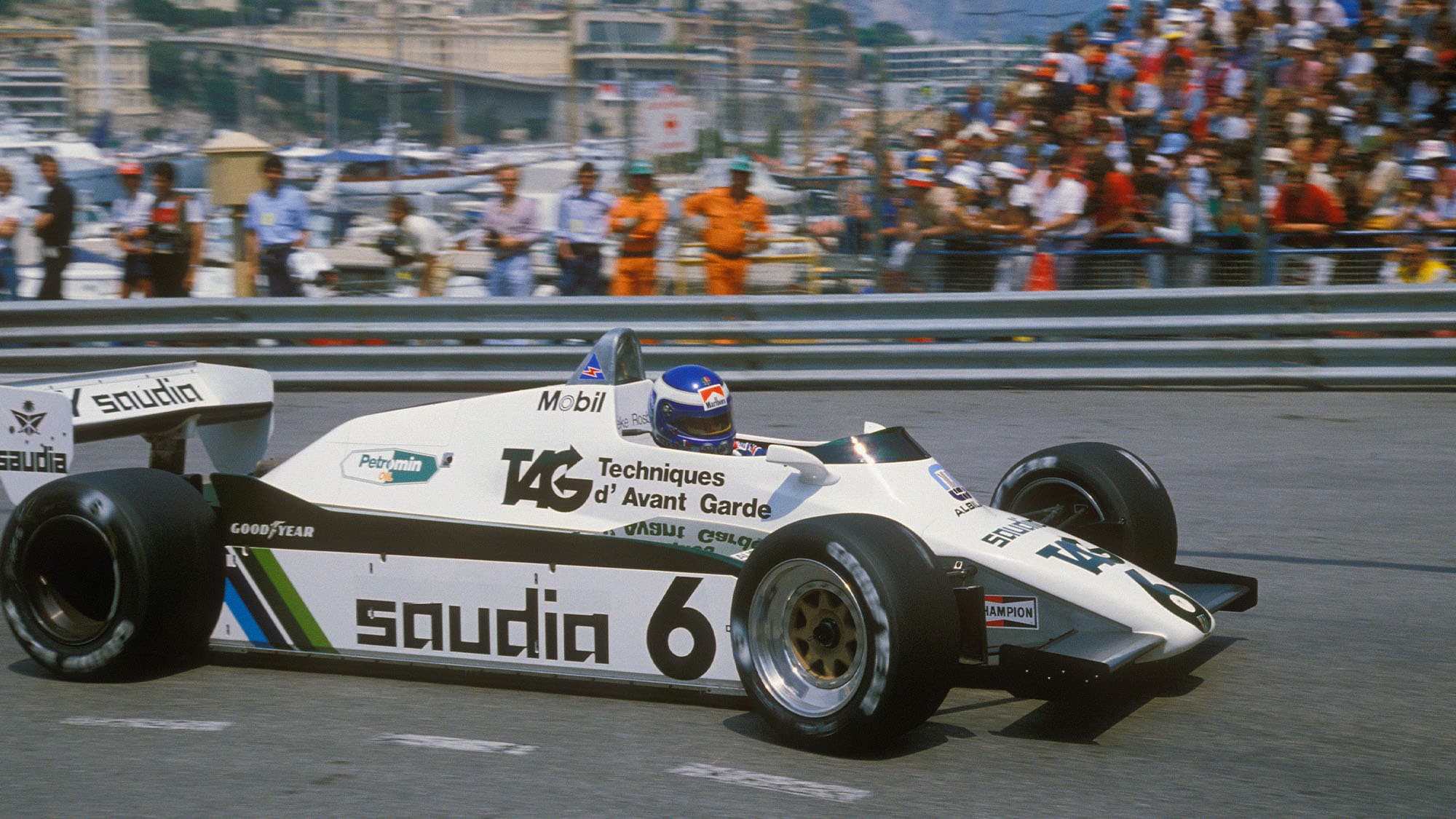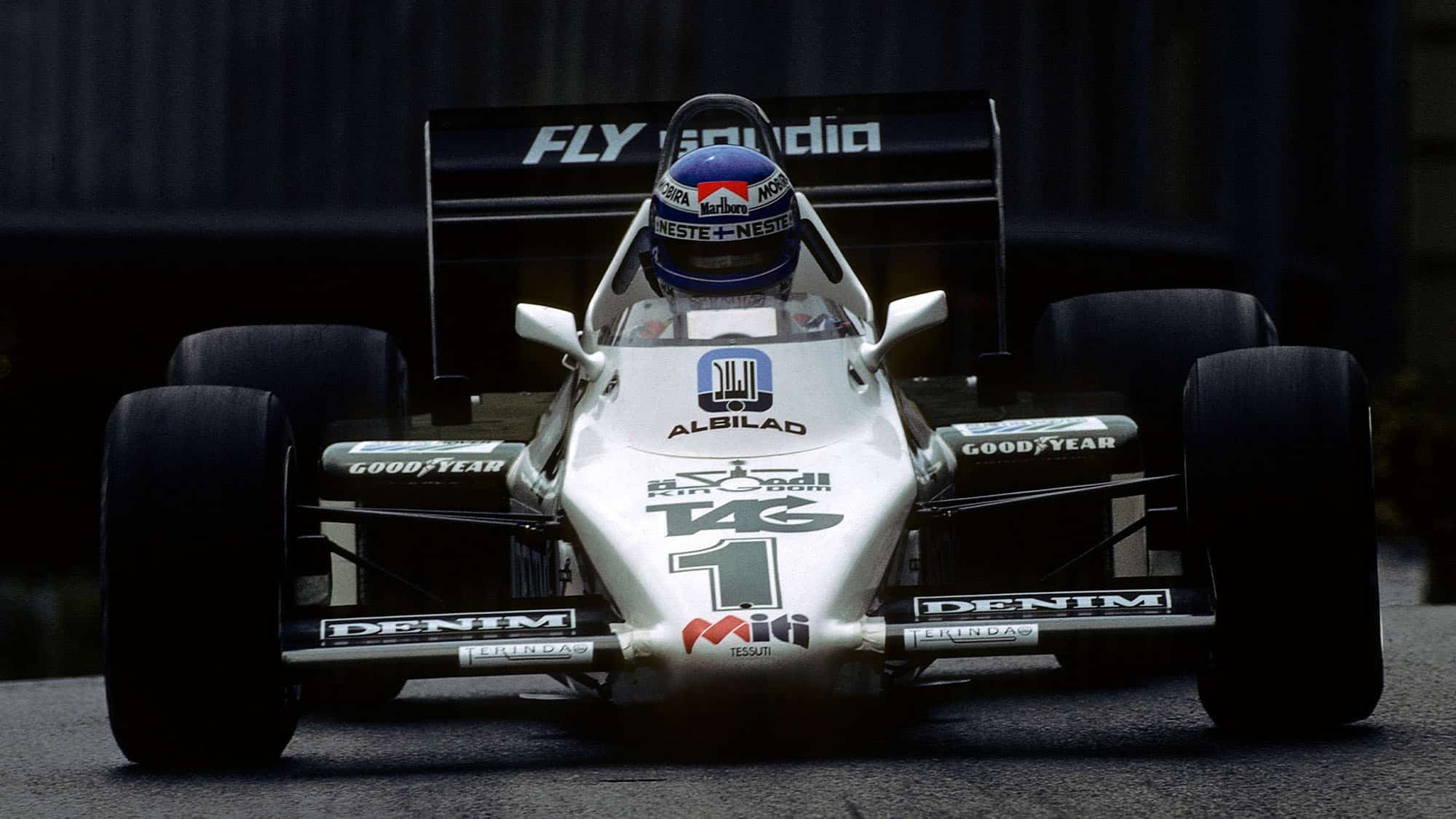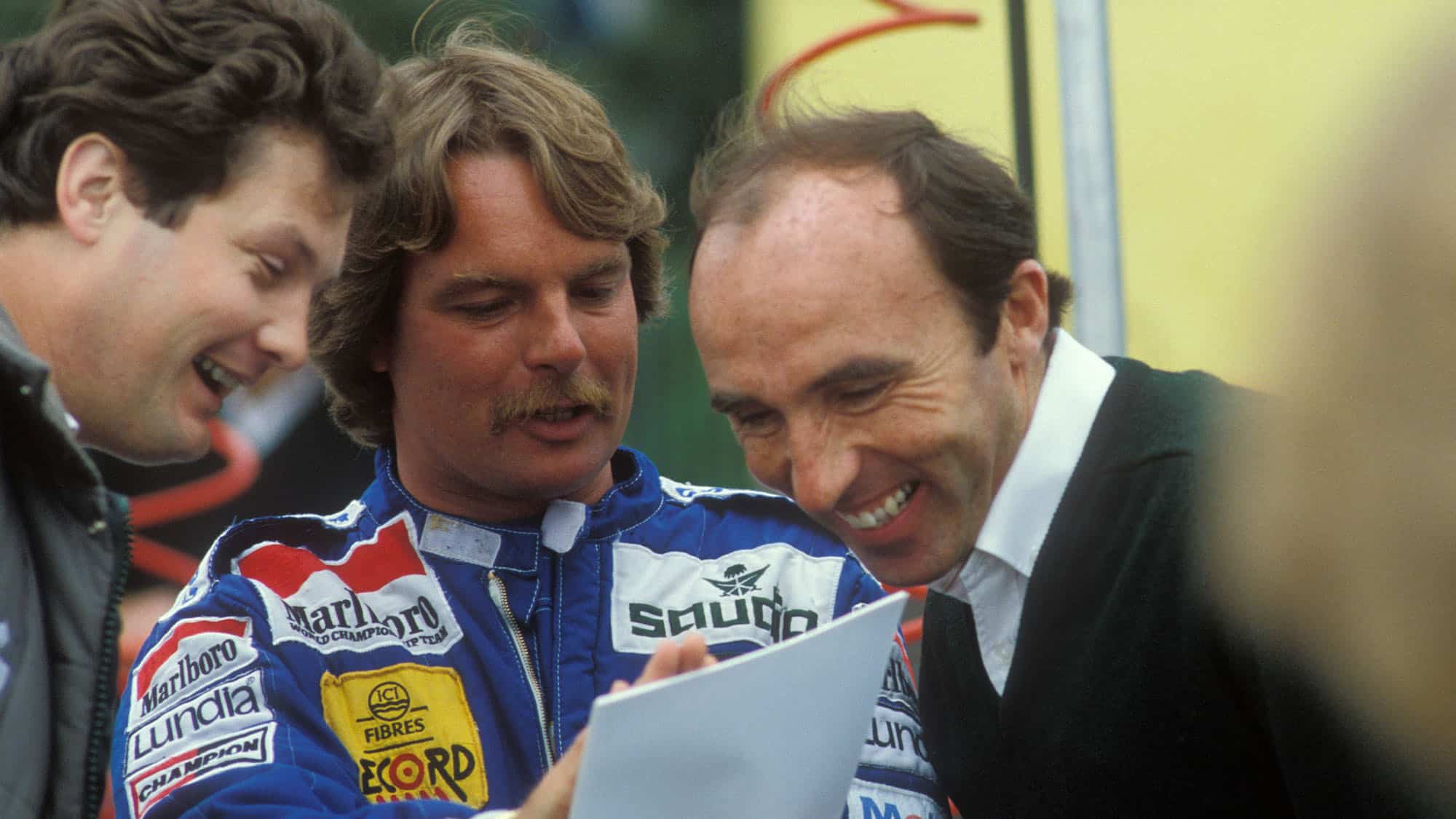KR: It is! I have a photo, taken from the top of Eau Rouge, where I’m flat through the corner with three wheels in the air. In those days it was so bumpy you could see almost nothing – but of course now you can’t have a bump anywhere, because racing drivers don’t like bumps.
It’s like the area around the swimming pool in Monaco. These days it’s defined by marks on the road — it used to be defined by stone walls! And you’ve also got visibility through the corner, where before you hadn’t. You don’t glance the wall anymore going in and then bang into the wall at the exit no, you just take a bit too much kerb.
Life changes, doesn’t it? Who am I to say that life was better then or better now? The safety has increased tremendously, and for that we should be grateful. I’m sure if Stirling Moss had looked at us in the ’80s he would have said. ‘Oh look, these kids with their fireproof overalls and full-face helmets. They’re chicken, aren’t they?’
Having said that, which were your favourite circuits?
KR: Oh, the bad ones of course! That’s the whole contradiction. I thought Brands Hatch was magic — there was nothing better than the old Paddock and it was the same with Eau Rouge at Spa. In fact, doing F2 at the old Nürburgring was probably the biggest thrill l ever had. I was on pole by six seconds and I was totally carried away. All four wheels in the air, maximum speed, four times a lap. I was dead scared, but I-just-loved-it!
You once told me that, in races, you talked to yourself.
KR: Well, not exactly – but I thought aloud. I thought through every corner. In complete sentences. It was the same when I was coming up behind someone. I always approached every driver in a different way – because everyone has a different style of driving.
There were a few guys you could never read, like Andrea (de Cesaris), but with Mario (Andretti) or Carlos (Reutemann) or Jonesy, you knew exactly what was coming. Same with Gilles…
Rosberg and Villeneuve had a lot of history, beginning, of course, with their Formula Atlantic rivalry in Canada in the mid-70s. Over time the pair of them had innumerable battles on the track, and Keke remembers them — and Gilles — with affection and relish.
It was always said of Gilles that he was hard but totally fair. Would you go along with that?
I loved racing with Gilles – he’d fight for the last inch
KR: Absolutely. I loved racing with him – he’d never make an incorrect move, never move over on you, but he’d fight for the last inch. That’s what motor racing was about or should be.
And you never chopped each other?
KR: No. We were too busy trying to keep on the road!
Was that the most intense racing you ever did?
KR: Atlantic with Gilles? Oh yes, for sure by a million miles – much more intense than F1 ever was. In Atlantic it was him and me, at each other all day long.
In fact. Gilles was too brave for my world, for the parameters I had set. He was fantastically quick, there was no one in our era as competitive as Gilles. Remember the Arnoux battle at Dijon in ’79? It couldn’t have been done with anyone else but Gilles. You think of them at the end of the race, embracing each other! Today two guys like that would be screaming at each other, and that’s the difference.
Back to Williams. Keke, always feisty, always honest, fitted the team to a tee and always had a good, straightforward relationship with Frank and Patrick. For some reason, Head seemed to produce cars that suited Rosberg’s style, just as they had his predecessor, Alan Jones.

Rosberg came through from fifth to win at Monaco ’82
Grand Prix Photo
KR: The FW08 was a lovely car in ’82. Front wings off, small rear wing as a flap, all the downforce coming from the underside. Jesus, it was quick! I felt I could do anything with it, and the ’83 car was the same just not as quick, because now we had the ‘flat-bottom’ rule.
I don’t know why it was, but Patrick just built cars that I liked to drive. I always needed a car with a front end – and then the back just followed. That was what really caught me – in a big way – when I went to McLaren.
I think of you and Williams, and a couple of races always particularly come back to me, both of which you won in adverse conditions. Let’s start with Monaco in ’83.
KR: Well, I’d say I was at my best from ’83 to ’85. And yes. I suppose that was a good win because it was so hard to finish the race, given the pain from my hands. The vibration through the steering was so bad it went through my gloves and then through two layers of skin.
Did you go to a doctor about that afterwards?
“When you think you’re finished, that’s when you start running on pure… adrenalin”
KR: What would have been the point? He would have said. ‘You’ve got blisters’. No. I remembered the old thing about salt water healing it very fast and I stuck my hands in the sea in Ibiza. But in those days that was normal – everyone had blisters because of the gear shifts, the vibration and all that. It was part of the game.
The early laps of that race were incredible the track was damp and you were on slicks, leading, with everyone else on wets…
KR: Well, I was proud of that race because we were smart. I was the only one – apart from Marc Surer – who did the warm-up lap on slicks. I mean, what was the downside? If it hadn’t worked then, OK, you go on wets. I knew exactly how much grip the slicks had — but the others didn’t, so they had to stay on wets.
The other race I always remember was the Dallas GP in 1984, the unbelievable heat, the track surface coming apart. You were in the most wilful car in the race, the Williams FW09, with ‘lightswitch’ power delivery from the Honda turbo. Was that perhaps your best win?
KR: No. not at all. It was a question of survival – being smart and staying away from the marbles at all costs. You had to go only at the speed the track allowed you to go.
You know, I used to get flak from Frank about smoking. Of course he was a health freak, always running like crazy, but he had to admit that I never showed any physical weakness during a race. And that wasn’t because I was so strong it was because I was able to handle the pain.
You did have incredible stamina…
KR: I did. yes. Once I got over the boiling point, which was painful, l could go on forever. About halfway through the race, when you think you’re finished, that’s when you start running on pure… adrenalin. I suppose.







